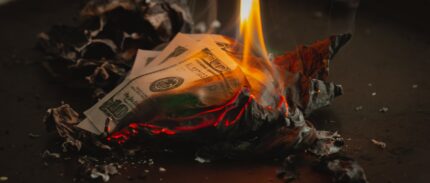By Rich Miller
You’ve heard about a hard landing of the economy. That’s a full-blown recession where millions of jobs are lost. And you’ve heard about a soft landing. That’s where the economy slows to a nice, steady pace without decimating the labor market as inflation comes down.

Now there’s a new economic meme making the rounds. It’s called a rolling recession, and it’s a bit of a hybrid. One industry suffers a contraction, then another, but the economy as a whole never swoons, and the job market largely holds up. “Industries and sectors take turns going down, as opposed to declining more or less all at once,” is how Loyola Marymount University economics professor Sung Won Sohn puts it.
That framework doesn’t explain everything that’s going on with this puzzling post-pandemic economy, but it’s as good a description as any of what the US has been going through since the Federal Reserve began lifting interest rates from zero in March of last year. And it holds out at least the possibility that the economy will survive its worst bout of inflation since the 1970s without having to endure a contraction.
The first to take the hit, not surprisingly, was housing, the sector most susceptible to the Fed’s rapid-fire rate increases. The industry was especially vulnerable because a steep runup in property prices during the pandemic had already put homebuying out of reach for many Americans. Housing starts, a key gauge of construction activity, fell for a fourth straight month in December and were down for the year as a whole, the first annual drop since 2009.
Next came manufacturing. A widely watched index of factory production has declined for five months straight through January. Among the culprits: cooling demand for US exports and consumers who are no longer locked down shifting their spending from goods—think Peloton bikes and personal computers—to services, such as restaurant meals and vacations. 3M Co., the maker of everything from Post-it notes to touchscreen displays, said last month that it plans to cut about 2,500 manufacturing jobs.
Tech companies that prospered during the pandemic have also been reducing staff in response to weak sales and falling online ad revenue. The industry announced job cuts of more than 97,000 last year and is on pace to top that in 2023, with 67,000 positions eliminated since Jan. 1, according to a Bloomberg tally.
Add it all up, and what you get is a deceleration in economic activity and a welcome topping out of inflation—but no widespread downturn.
Because of consumers, the main bulwark of the economy, things haven’t gotten worse. Although they were squeezed last year by higher prices for gas, eggs and everything else, they didn’t buckle, thanks to savings built up during the pandemic and the boost to incomes from a vibrant job market. “While macroeconomic and geopolitical uncertainty persists, consumer spending has been remarkably resilient,” Mastercard Inc. Chief Executive Officer Michael Miebach said in a Jan. 26 earnings statement.
This is not the first time the US has suffered a rolling recession. Veteran financial market analyst Ed Yardeni recalls using the phrase in the mid-1980s, when a collapse in energy prices cut a swath through the oil patch and the repeal of an investment tax credit crippled commercial real estate. The economy slowed but didn’t crack.
Another soft patch occurred in 2016, as a runup in the dollar hurt US exporters and a decline in commodity prices depressed revenue for farmers and oil companies. But again, no recession—though some pundits said the slowdown in America’s heartland helped Donald Trump get elected president that year.
So what’s in store this time? The ideal outcome, from the Fed’s and investors’ point of view, would be for the rolling recession to continue, say Charles Schwab Corp. analysts Liz Ann Sonders and Kevin Gordon. If that were to happen, the weakness in the economy would extend into the service sector, and the hot job market would cool, even as housing and manufacturing started to stabilize and then turned up. This scenario would allow the US expansion to continue while paving the way for a further fall in inflation.
The signs of this happening are mixed. Much to the surprise of economists, hiring exploded in January, pulling down the unemployment rate to its lowest level since 1969. That led to yet another meme on Wall Street, the no-landing scenario: Growth revs up and inflation stays elevated, forcing the Fed to slam on the brakes and drive the US into a recession.
But not everyone buys into that gloomy take. On Feb. 6, just days after the release of the bumper jobs numbers, Goldman Sachs Group Inc. chief economist Jan Hatzius lowered his odds of a downturn over the next 12 months, to 25% from 35%. In a note to clients, he cited, among other things, a slowdown in wage growth and a rapid drop in inflation—both of which are welcome news for the Fed. Schwab’s Gordon says it’s basically a toss-up whether the rolling recession the US is experiencing will turn into something worse: “Nobody has a good handle on this yet.”
More stories like this are available on bloomberg.com.


